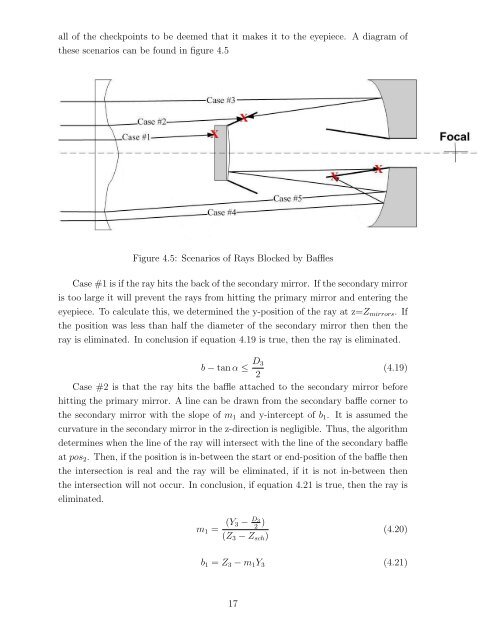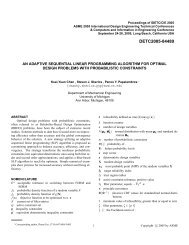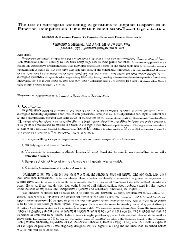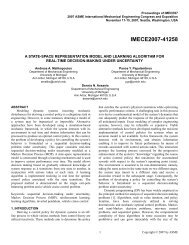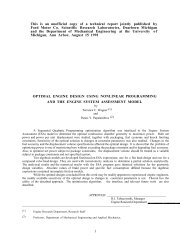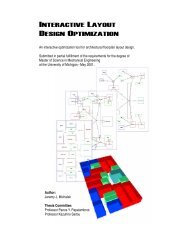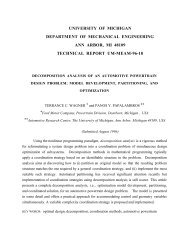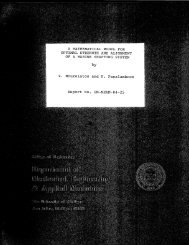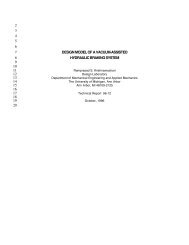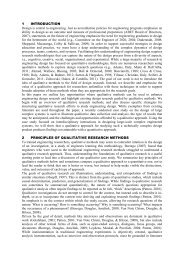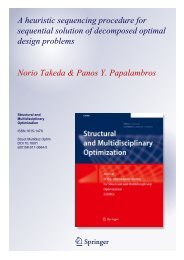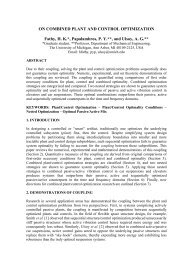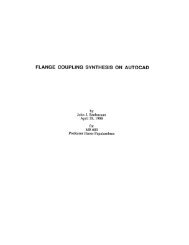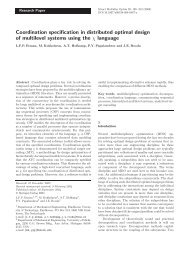Design Optimization Model for a Schmidt-Cassegrain Telescope ME ...
Design Optimization Model for a Schmidt-Cassegrain Telescope ME ...
Design Optimization Model for a Schmidt-Cassegrain Telescope ME ...
Create successful ePaper yourself
Turn your PDF publications into a flip-book with our unique Google optimized e-Paper software.
all of the checkpoints to be deemed that it makes it to the eyepiece. A diagram ofthese scenarios can be found in figure 4.5Figure 4.5: Scenarios of Rays Blocked by BafflesCase #1 is if the ray hits the back of the secondary mirror. If the secondary mirroris too large it will prevent the rays from hitting the primary mirror and entering theeyepiece. To calculate this, we determined the y-position of the ray at z=Z mirrors . Ifthe position was less than half the diameter of the secondary mirror then then theray is eliminated. In conclusion if equation 4.19 is true, then the ray is eliminated.b − tan α ≤ D 3(4.19)2Case #2 is that the ray hits the baffle attached to the secondary mirror be<strong>for</strong>ehitting the primary mirror. A line can be drawn from the secondary baffle corner tothe secondary mirror with the slope of m 1 and y-intercept of b 1 . It is assumed thecurvature in the secondary mirror in the z-direction is negligible. Thus, the algorithmdetermines when the line of the ray will intersect with the line of the secondary baffleat pos 2 . Then, if the position is in-between the start or end-position of the baffle thenthe intersection is real and the ray will be eliminated, if it is not in-between thenthe intersection will not occur. In conclusion, if equation 4.21 is true, then the ray iseliminated.m 1 = (Y 3 − D 32)(Z 3 − Z sch )(4.20)b 1 = Z 3 − m 1 Y 3 (4.21)17


